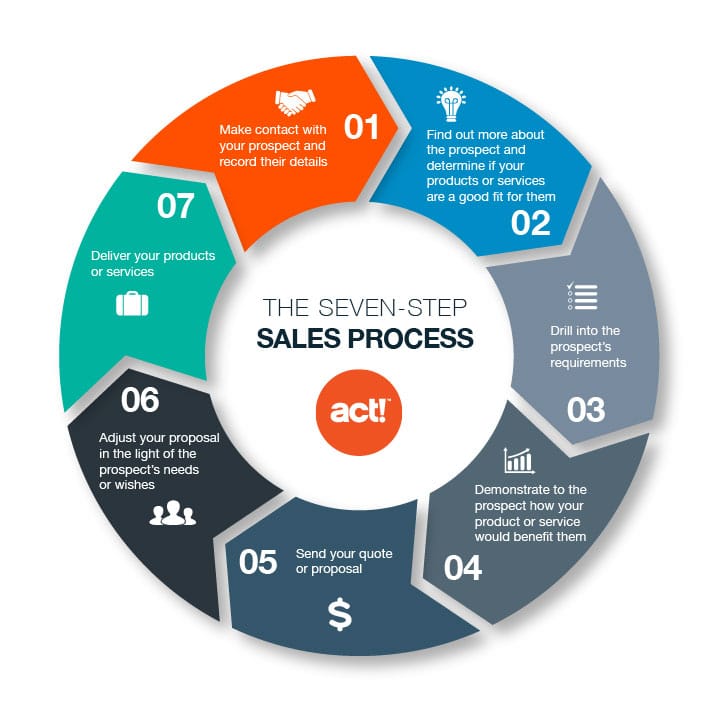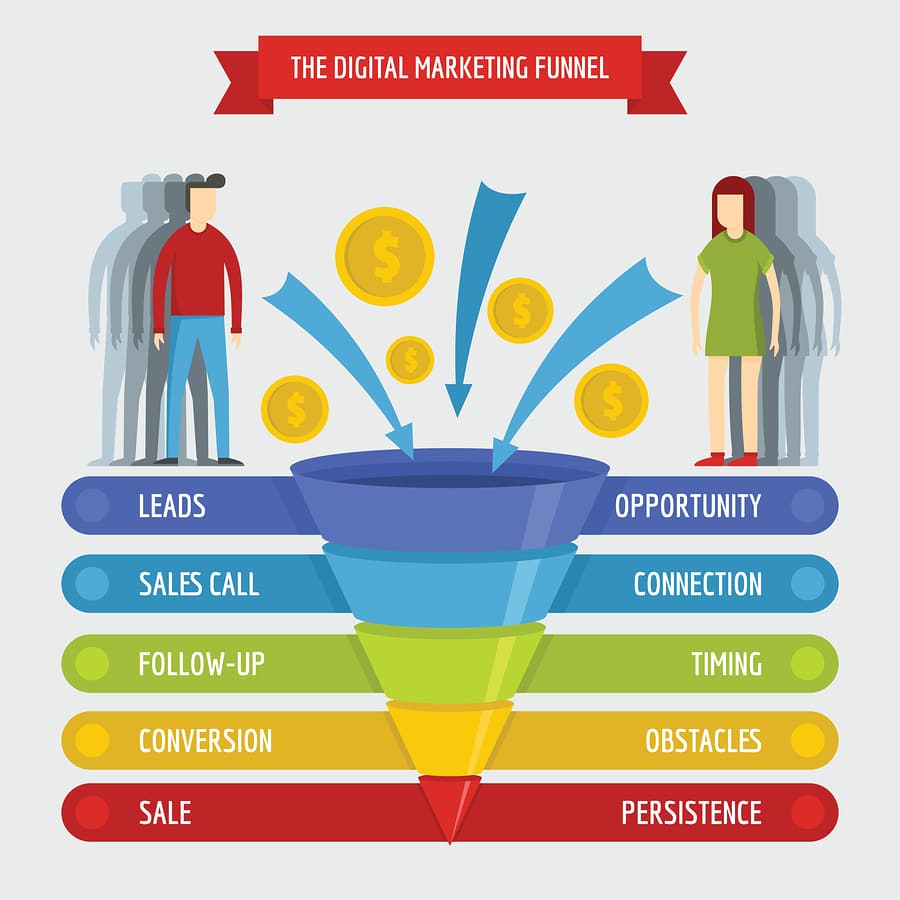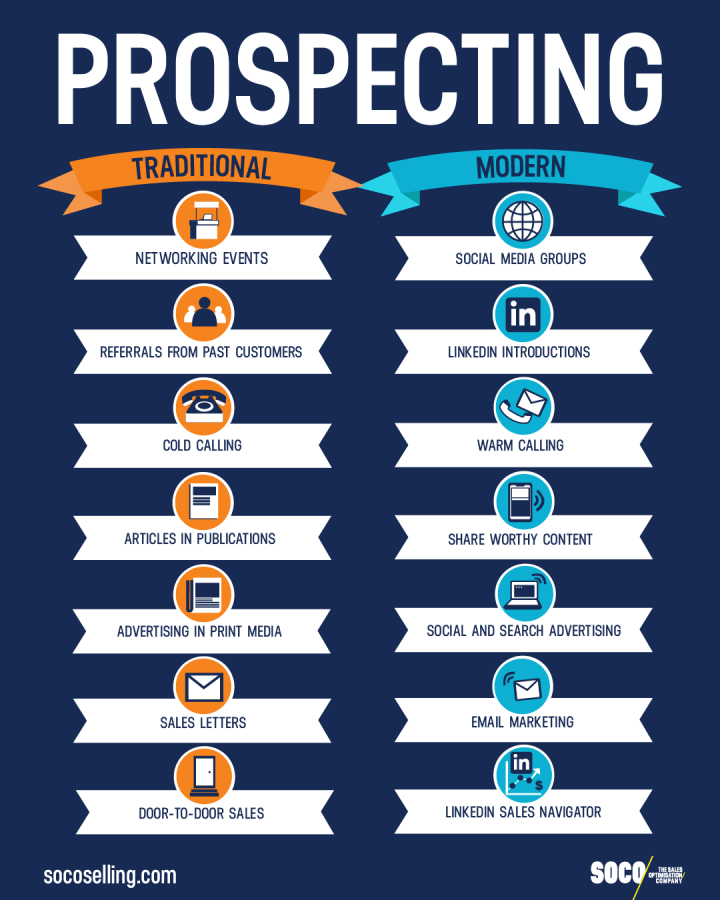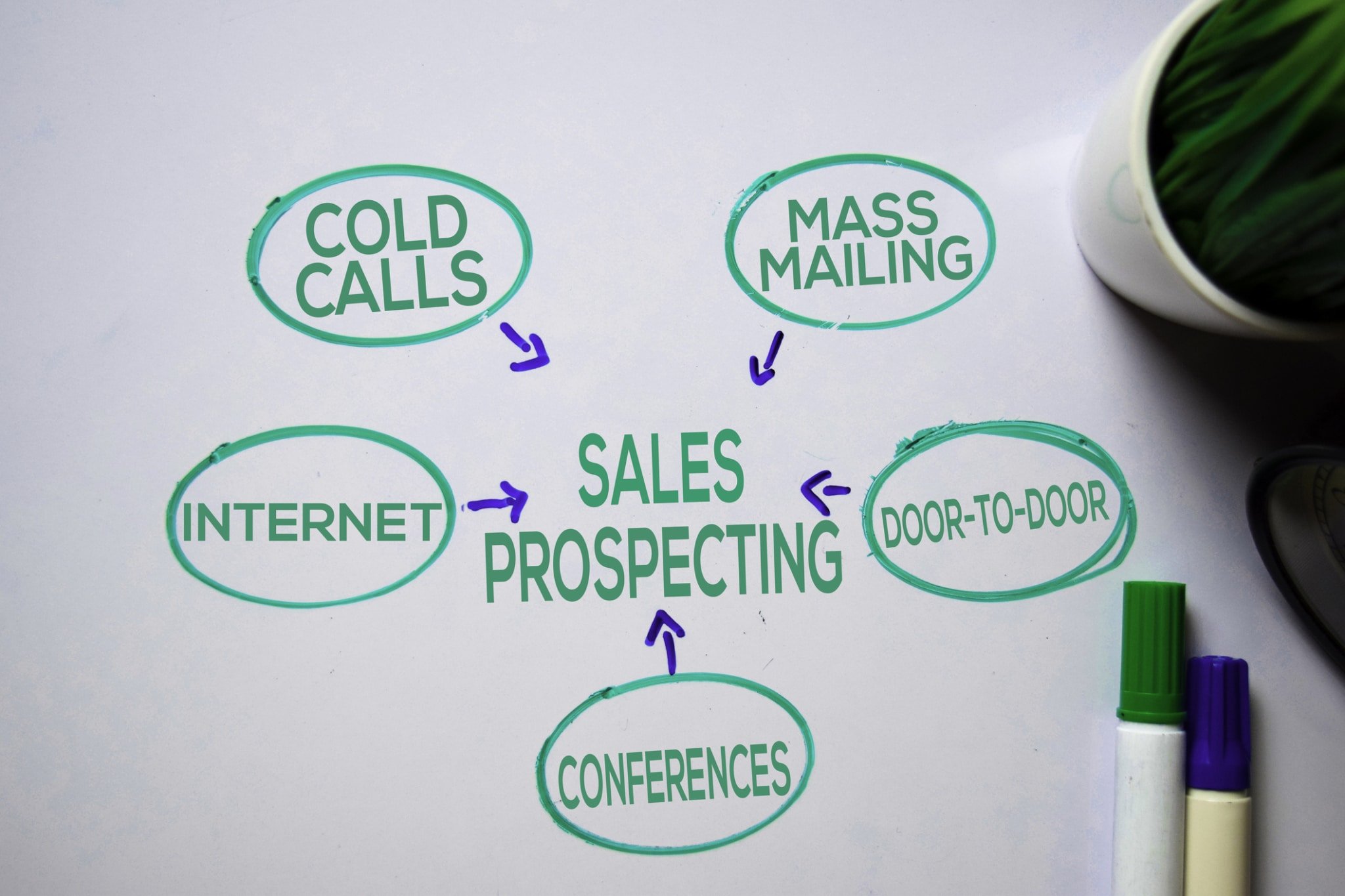Building quality leads is an essential part of any business. You want to make sure that you are selling your products to interested people. The best way to do this is through sales prospecting.
Doing this ensures that you are targeting the right people from the start of your sales pipeline. It also means that you are picking up on potential customers and turning them into lifelong clients. The way to do this is to optimise the new leads you send to your sales team and make sure they’re getting there before the competition.
Of course, in a world surrounded by advertising, it can feel that things like cold calling and person-to-person selling have had their day. However, customers still respond better when a salesperson gets involved. In fact, 62% of customers prefer human interaction.
So, to make sure that you’re getting lifelong customers, it’s time to make the most of sales prospecting.

What is sales prospecting?
The sales prospecting process is the very first stage of the sales process as a whole. It’s where a sales rep puts out the feelers to make sure they’re getting the best prospects for your firm. The clients that people target are usually candidates that fit their ideal customer profile.
It’s essentially about being able to provide opportunities that help reps close deals. But you can’t just try and create sales using anyone and everyone. To make a sales funnel with a successful outcome, you need to make sure you aim to hook potential buyers. It’s better to have a handful of potentially good buyers than lots of possible dead leads.
New prospects can be contacted in various ways, including through emails, social chats, inbound and outbound calls.
The difference between leads and prospects
Although both are a part of the sales funnel, leads and prospects are different things. Leads are at the first stage of the sales process and are all the people who could turn into potential prospects.
Leads may have shown interest in or have some link to your firm already. A prospect, however, is more somebody that fits your client profile. They can be either individuals or whole businesses. Salespeople will chat to leads and decide if they qualify for your firm’s customer profile and if they need the thing you’re selling.
Before contacting people, there are also a few questions your salesforce may want to ask themselves about the potential client. These are queries around company size, geographic location and, of course, whether they fit with your company’s values.
If leads have already reached out to your firm, or they already use something from one of your competitors, then you know they are interested in your brand in general.
To avoid wasted time before you get to the sales prospecting stage, you also need to ask yourself if you are a fit for them and them being a fit for you. Otherwise, you may find yourself with a disappointing dead lead halfway down the pipeline.

The difference between lead generation and sales prospecting
The terms sales prospecting and lead generation are often used at the same time. Although they have a similar outcome, there is a big difference between the two.
While salespeople undertake sales prospecting, lead generation is often carried out by the marketing team as a whole.
Lead generation is how the marketing department gets leads. It’s about building brand awareness, performing outreach and getting contact information. Sales prospecting is the assessment and nurturing of leads into prospects.
Sales prospecting KPIs
Key Performance Indicators (KPIs) are essential in tracking how successful prospecting efforts are. They’re also a great excuse for setting key goals to follow in finding great clients in the first place. However, you need to keep in mind that not all actions can be monitored and that certain points can be changed throughout the buying process.
However, sales prospecting KPIs that you can track could be the number of calls and emails that are being sent per day/week/month. It can also measure how many meetings are being held as well as win rates and deal sizes.
Whether trying to create B2B sales or B2C ones, some other kinds of KPIs can be measured in this scenario. These include evaluating how many calls are being made in a set time frame, the conversion rate and how often a sales representative is reaching out and making a follow-up call or leaving a voicemail.
KPIs are an excellent way of figuring out how your sales team’s outreach is doing and the methods that are getting the best results.
Who should be doing sales prospecting?
While marketing teams may influence grabbing a potential customer’s attention, and sales prospecting are mostly down to the sales team. They’re the ones who will be finding prospects, ensuring they fit, and building up a rapport with companies and individuals.
Using a specific team to track qualified leads is great for several reasons. Firstly, it helps keep things organised. Leads can work with individual prospectors, meaning that potential clients won’t be bombarded by phone calls and emails from different people in the firm. It also means that the reps can easily make follow up appointments and really personalise people’s experiences.
Instead of putting out generic automation messages and hoping to get a response, the sales team can build up genuine human relationships. What’s more, those sales professionals will have special training and will know how to steer people towards your firm and further down the pipeline.

Why is sales prospecting important?
Sales prospecting is a more focused way of getting customers who you know are interested in your firm. No business wants to waste time, money, and effort contacting anybody and everybody. So, by employing effective prospecting methods, firms have more chance to make sales and grow.
It’s also important because it helps you keep an eye on how customers respond and ensures that you are getting the right people through the funnel and onto the next stage. Also, because people will focus on specific buyers, knowing they will get a higher return in interest, employees will feel more encouraged. And so, it will be more productive.
For the same reason, more sales will be made. So, not only will the money be saved, but effective sales prospecting can also get better results than other generic methods of reaching out to customers.
Plus, it’s a great opportunity to add personalisation to your sales methods. Salespeople can discuss how your brand fits with a specific prospect.
Doing this is an important part of the sales development process. It could be that your firm doesn’t have enough visibility, or it could just be that your competition offers software or features you don’t. Whatever the reason, using prospecting will enable you to have a deeper look into your firm’s strategies.
One of the biggest advantages of sales prospecting is that it helps you build a rapport with other businesses and customers. When done well, this can help your firm a great reputation and encourage others to turn to you as a business.
A step-by-step guide to effective sales prospecting
Whilst you may have the team to do sales prospecting, making it effective is a different matter. To do this, you have to get into the customer’s mind and think about what they want. You then need to prove that your product fits with those wants.
1. Create a client profile
Before someone becomes a paying customer, there are a few points that need to be addressed. As has already been discussed, you need to ensure the client fits your customer profile.
You need to ask yourself about qualifying the lead and deciding how the client suits your product. For instance, can they afford it, will they use it, and will they keep on buying it in the future?
It helps to consider who is already doing business with you and the type of clients you already have.
2. Research
As with any informative and detailed piece of work, the key to a good outcome is research. You must be getting the correct information about people to help make your firm more trustworthy and build those relationships.
This research can come from anywhere you can find info about the possible client. It could be that they have written a whitepaper that links to your company somehow. Or perhaps they have a detailed webpage. Whatever it is, take a look and dig deep to do the best research you can. All this will help give you an idea of who your prospective customer is and how you can get in their head.
You can also look at the type of deals that this company or person has made in the past. It helps to figure out how your product can help their firm and if it’s sustainable with their business plan.
Consider what might be preventing them from buying and make it clear to them what your firm actually does.
3. Figure out who makes the decisions
The person who makes the ultimate decision will be the one you want to target. There’s no point in wasting time buttering up the receptionist as they won’t be the one who says yes to your deal. It may take a few attempts to get through to the decision-maker as they will probably be quite high up.
Luckily, today it’s easier to find people’s job roles on platforms like LinkedIn, so you know who to focus on and contact straight away. It also helps to look at details, such as their geographic location and specialities, because it will help narrow down the search.
Not every company will have a single decision-maker, so it could be beneficial to find more than one within a firm.

4. Define priorities
Remember that this stage of the sales funnel is all about getting the right leads to putting in front of your sales reps. So, with all this new information you have, you can prioritise your leads from here.
Analyse how people will match with your brand to narrow down your search for prospects. You can even put them in order of fit and who you think is most likely to lead onto an actual sale later down the funnel.
5. Be prepared
It isn’t enough to do some research before connecting with people. It would be best if you were prepared for their specific needs and wants, too. This means that any sales rep needs to know the product like the back of their hand.
Prospects may end up asking detailed questions. If reps aren’t prepared, this could easily make them lose interest in you, even if your product is perfect for them.
A good way to avoid this is to be exact about the product and discuss how it can help this client specifically. It also helps to have conversations with potential customers and get to know them as best as possible.
You want them to feel a connection with your firm. Like with the research stage, examine how they put themselves out there as a company through blogs and websites. Reflect on their brand and discuss how your company relates to them and any unique selling points they have.

6. Understand what the client wants and actually outreach
Whilst customers may be interested in your product and may have even contacted you with an inbound call; it doesn’t mean it’s okay to presume that you don’t need to make any more effort with them.
They may have a dozen other firms contacting them about similar products, so you need to really hone in on why you are a good match.
It’s also important to consider if they are genuinely interested in your firm and if they are likely to become a paying customer. Or if they are simply just browsing. Remember to always talk to people like humans and not like someone you are trying to sell out of. Connect with them using an outreach technique that works with them specifically.
7. Review
Before moving on to the next stage, you need to review if the client really is for you. Have they ticked all the boxes? Does anything else need going over? Are they the right person to take into the next part of the pipeline?
From your perspective, there is nothing wrong with reassessing your prospect and seeing if they really are a good fit. Remember, one of the big points of sales prospecting is to avoid dead leads.

Sales prospecting techniques that work
Again, whilst you may have some insight into how to get things started, getting some techniques to make your sales prospecting work is always good.
At first, finding the right leads can be one of the biggest pain points that firms face. But there are some good sales prospecting techniques reps can use.
-
Consider customer psychology
Everyone has a reason for buying specific things. Your sales reps need to figure out what these reasons are and the psychology behind them. Then they can apply this to your product.
Does your customer like novelty things? Are they driven by something that tells a story? Or are they just curious about new things and how products are helping the world advance?
Whatever it is, aim for that reason. Remember to be specific with their wants and needs and discuss your product to reflect on their psychological buying needs.
Maintain the idea that your customers are people. By considering the psychology behind shopping, you are keeping that human connection in mind.

-
Optimise phone calls
Cold calls and cold emails are essential to sales prospecting. However, the point here is to actually make sure that your team is making the most of their time on outreach. As statistically, the more outbound calls you to make, the more referrals you get.
Ensure any communication you do is backed up with research and that you are finding out as much about the customer as possible. Also, make sure to be open and a good listener when the client is talking, as this will show that you are interested in them and not just selling a product.
-
Target the inbox
You can easily reach out using LinkedIn, Twitter and even Facebook to find people who work in certain industries and are part of specific groups that may fit with your firm. But you can also use emails to contact people.
If you haven’t already got them, there are many tools out there to help you find a prospect’s email address. You could even try a simple online search for them as well.
For both social media and emails, you need to try and do what you can to get them to open the message. A good way to do this is to create a good subject line relevant to their needs. Don’t forget to personalise it too.

Sales prospecting tools for your business
There are plenty of prospecting tools that you can use for your business to help get you that one step ahead.
A CRM tool is great for many reasons. Firstly, it can help you make appointments with clients, and it also gives you the options to chat if needed. Secondly, you can set up email templates containing all the important information you need to pass on, saving you lots of time in the long run.
As well as this, don’t forget about email address finding tools that will make it easier for you to contact decision-makers. And also, when it comes to finding the right people via socials, LinkedIn has a Sales Navigator tool called LinkedIn scraper, you can then automatically obtain their email addresses of such people, find people based on their fit for your firm. Using Twitter, you can search for people’s interests and contact them, too.
Of course, things like video, phone and chat tools will also be massively beneficial to you, not only for talking to clients but for setting up meetings with them and answering their questions.
How to use RingCentral for sales prospecting
RingCentral offers several solutions to make sales prospecting that little bit easier. For one, a VoIP call system that allows real-time conversations with potential clients is invaluable.
Video calling is also a key feature within the RingCentral MVP™app. This allows you to meet face-to-face and give a better impression to prospective clients, showing that you are serious about your products. And the more a prospect trusts you, the easier it is to move them down the sales funnel.
As well as this, because RingCentral is based in the cloud, there is a function to log prospect data and record details about each chat. This means that whenever a conversation is had, it’s much easier for a representative to follow up on any vital points and build that essential relationship.
Along with this, there is also a RingCentral app that offers video calls on the move. Once you have logged in, you can start a conversation with a potential client wherever both parties are. This not only creates instant communication but also means that no one is missing out on important opportunities.
There are many reasons why sales prospecting is vital for your business. Ultimately, it helps you filter out the clients who are the right fit for your product and firm. This helps you avoid dead leads, build up more sales, and save time. There are plenty of steps, techniques, and tools that can help make your life easier and begin to create long-lasting relationships with clients.
RingCentral offers features and tools to help you connect with the right people, say the right thing, and make sure you’re there for your clients—the existing ones and those of the future. As a result, helping your company be the best it can be and really putting your brand on the map.
Originally published Jun 02, 2021, updated Feb 27, 2023



